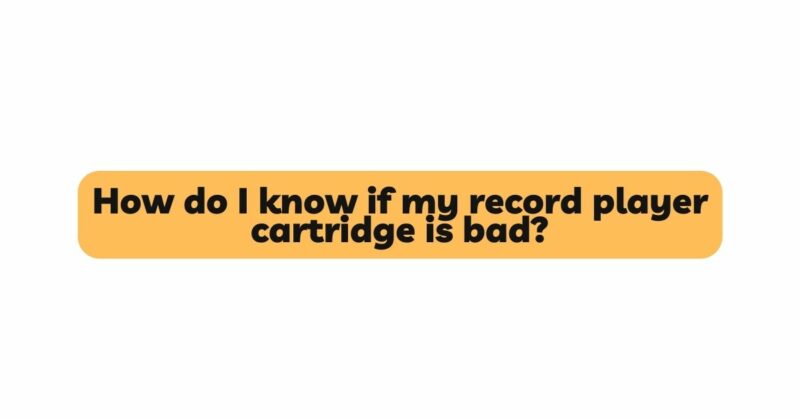The allure of vinyl records lies not only in their rich analog sound but also in the delicate interplay of components within a turntable, with the cartridge playing a pivotal role. The cartridge is the heart of a record player, responsible for translating the grooves on the vinyl into audible music. However, like all mechanical parts, cartridges can experience wear and tear over time. In this article, we embark on a journey to understand the intricacies of record player cartridges, exploring the signs that indicate a faulty cartridge and the steps to diagnose and potentially rectify the issue.
The Importance of a Healthy Cartridge
A record player cartridge is a complex assembly that houses a stylus (needle) responsible for tracking the grooves on the vinyl and translating the physical information into electrical signals. These signals are then amplified to produce the audio you hear. A healthy cartridge is vital for maintaining the integrity of the sound reproduction process. When the cartridge is compromised, it can result in diminished audio quality, distortion, and even damage to your records.
Signs of a Faulty Cartridge
- Distorted Sound: One of the most noticeable signs of a bad cartridge is distorted or muffled sound. If the music sounds muddy, lacks clarity, or exhibits excessive sibilance (pronounced “s” and “sh” sounds), it could indicate an issue with the cartridge’s alignment or wear on the stylus.
- Excessive Surface Noise: While some surface noise is normal when playing vinyl records, an unusually high level of crackling, popping, or static could indicate a problem with the stylus. A worn or damaged stylus can exacerbate surface noise and disrupt the listening experience.
- Imbalanced Audio: If you notice one channel (left or right) of your stereo audio is significantly louder or quieter than the other, it could suggest a misalignment or issue with the cartridge’s tracking force.
- Skipped Tracks: A cartridge that struggles to track the grooves accurately may cause the stylus to skip or jump across the surface of the record. This skipping can lead to audible interruptions and potential damage to your vinyl.
- Uneven Wear on Records: If you observe uneven wear or damage on your records, such as excessive groove wear in certain areas, it might indicate an alignment issue with the cartridge.
- Inconsistent Tracking: If the stylus is not tracking the grooves consistently, you might notice variations in pitch or speed as you listen to the music. This can lead to an unstable playback experience.
- Low Output: A decrease in overall audio volume or a loss of high frequencies could indicate a problem with the cartridge’s coil or wiring, resulting in a lower output signal.
Diagnosing and Addressing Cartridge Issues
- Visual Inspection: Begin by examining the cartridge and stylus for visible signs of wear, damage, or misalignment. Look for any bent or broken parts and check the condition of the stylus tip.
- Check Tracking Force: Ensure that the tracking force—the downward pressure exerted by the stylus on the record—is set correctly. An imbalanced or improperly set tracking force can lead to tracking issues.
- Alignment: Cartridge alignment is crucial for accurate tracking. If you suspect an alignment issue, consult your turntable’s manual or online resources to learn how to properly align your cartridge.
- Stylus Replacement: If the stylus is visibly damaged or worn, consider replacing it. A worn stylus can contribute to sound quality issues and damage your records.
- Professional Inspection: If you’re unsure about diagnosing or fixing cartridge issues, consider seeking professional help. An experienced technician can assess the health of your cartridge and recommend appropriate solutions.
Conclusion
A record player cartridge is a critical component that influences the quality of your vinyl listening experience. Recognizing the signs of a faulty cartridge—whether it’s distorted sound, excessive noise, or uneven wear—can empower you to address the issue promptly. Regular maintenance, proper alignment, and occasional stylus replacement can contribute to prolonging the life of your cartridge and ensuring optimal sound quality.
Remember that the health of your cartridge impacts not only your listening pleasure but also the longevity of your vinyl collection. By understanding the workings of this vital component and staying attuned to its performance, you can continue to revel in the joys of vinyl records with the assurance of pristine sound reproduction.


